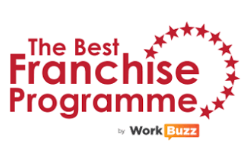Running a successful restaurant business in the UK is both highly rewarding and extremely demanding. Financial concerns are constantly the main focus for decision makers. According to data from Price Bailey, insolvencies increased by 40% in 2018 over the previous year, the equivalent of four establishments closing every day.
So, why is it so challenging to maintain a profitable restaurant business?
Operating costs
Business rates and property rental prices have increased steadily over the last few years, so having a physical restaurant can be a prohibitive cost. Furthermore, Brexit is expected to force food and ingredient costs upwards in the event of a bad deal along with limiting access to labour from the EU.
Since restaurants naturally don’t have a huge influence on tax or property prices, the best approach to combat this is to look for ways to achieve cost efficiencies. Some chains have resorted to opening so-called dark kitchens in areas where there’s enough demand to set up a delivery outpost allowing customers to order using a delivery app but not enough to set up a physical restaurant. Of course, all needn’t shut down completely.“
Using technology, restaurants can automate processes that might otherwise require significant human effort. Self-service kiosks and tableside ordering tablets which can take customer orders can be a good solution whilst also increasing the spend per head.
Self-service and EPOS systems can also help reduce wastage because orders are more likely to be processed correctly. Furthermore, inventory management tools are often built into these systems, allowing managers to stay on top of stock and reduce the risk of running out of menu items that could cost them customers.
Crucially, by focusing on creating more efficiencies through upgrading their tech, restaurants will naturally have more time and money to focus on delivering a superior experience.
Consumer confidence
When consumer confidence is low, they wouldn’t want to spend more than they strictly have to. Providing better value for money should therefore be a priority. Customers expect more than just good food, especially since delivery apps have made it easier for delicious treats to be delivered to their doorsteps. They want a great experience, one where the restaurant is fully attentive to their needs. Which is why we’re seeing a growing trend for experiential dining using technology of all kinds to create a more enticing environment.“
Adapting to change
More than anything, modern restaurants must pay attention to what their customers want and expect. Adoption of veganism, for example, has been steadily rising, so if you can’t serve vegan-friendly food, you’ll inevitably miss out on many customers.“
Collecting and analysing customer data, tracking what’s selling well, what isn’t and what works well in specific seasons is essential for every restaurant.
Restaurant failure is not inevitable. However, those that seek to compete in a tightly packed and fast moving market must take the necessary steps to reduce their overheads, adapt to change and, above all, give the customer a reason to walk through their doors.“




































